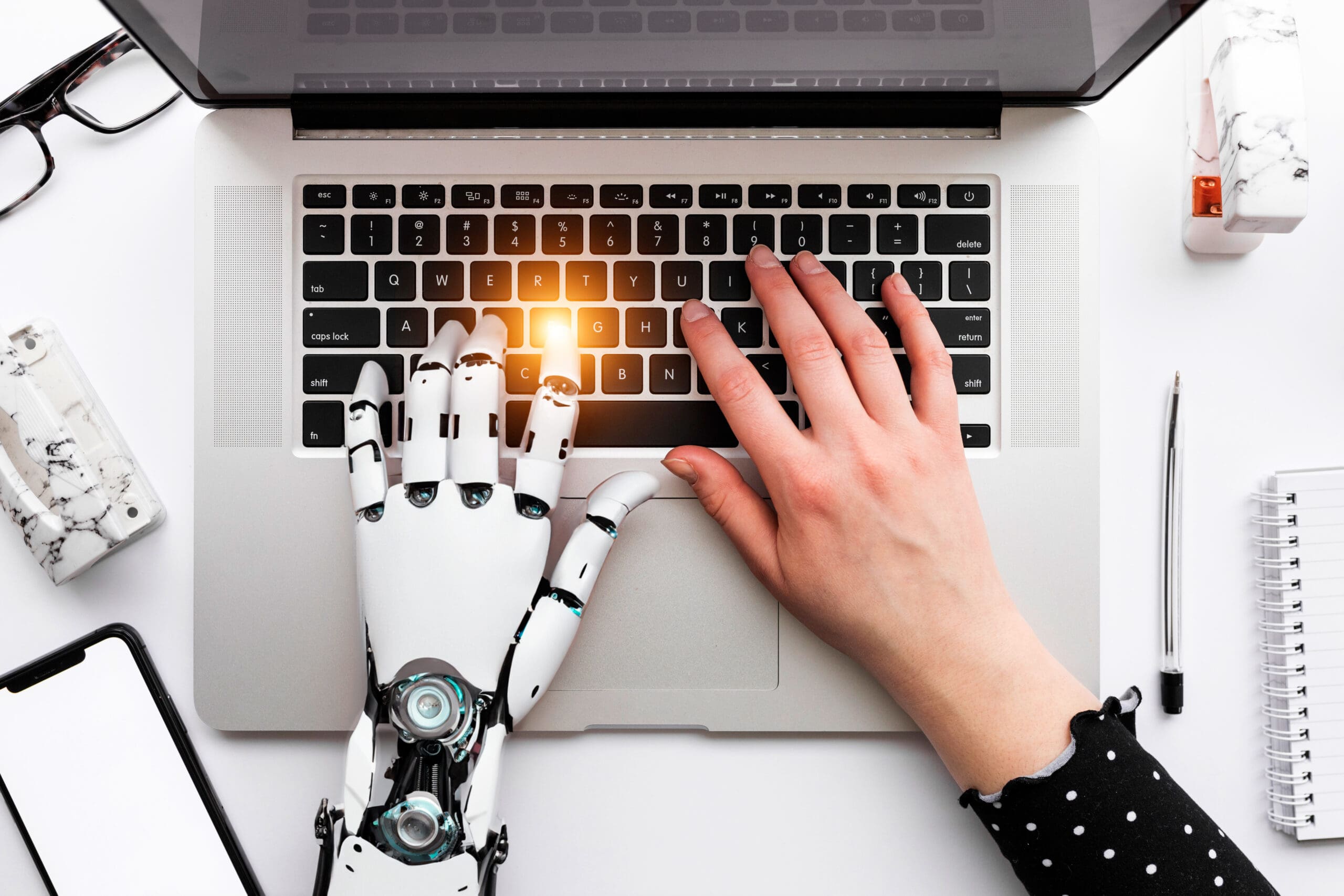Introduction: breaking age-related stereotypes
In the ever-evolving landscape of technology, artificial intelligence (AI) has emerged as a powerful force shaping various aspects of our lives. However, as we delve deeper into the integration of AI into society, it becomes crucial to examine the potential connections between ageism and this rapidly advancing technology. Ageism, or discrimination or prejudice based on age, unlike other forms of discrimination, tends to be widely accepted, normalized, and sometimes even overlooked. Surprisingly, it may find an unexpected ally—and, let's hope, adversary—in AI systems. This blog post aims to explore the intricate relationship between ageism and AI, shedding light on both the challenges and opportunities that arise at this intersection.
Ageism and AI: the role of bias
Implicit bias in AI algorithms
One of the primary concerns at the intersection of ageism and AI lies in the inherent biases embedded within machine learning algorithms. These biases, often unintentional and stemming from the data on which the AI models are trained, can inadvertently perpetuate age-related stereotypes. For instance, if training data predominantly includes interactions with younger individuals, the AI system may struggle to understand or cater to the needs of older users. Addressing these biases is crucial to ensuring fair and equitable outcomes in AI systems, particularly as they play an increasingly significant role in various aspects of society.
Impact on employment opportunities
The impact of AI biases on older professionals is pronounced. These individuals often confront unique challenges in accessing opportunities and combating stereotypes. Automated hiring processes, driven by AI algorithms, may inadvertently favor younger candidates, leading to the exclusion of experienced older professionals. The perpetuation of ageism in these systems not only hinders the career progression of older individuals but also reinforces harmful stereotypes about their adaptability to evolving technologies. As a result, bridging the gap between AI development and age-inclusive practices becomes imperative to ensure that older professionals are not unfairly marginalized in the workforce.
The prevalence of ageism in the tech industry
In the tech sector, where youth is often equated with innovation and adaptability, older workers may encounter biases that hinder their career progression. Moreover, the lack of diverse representation in the development teams creating these algorithms can contribute to unintentional oversights and the perpetuation of ageism. This age-related discrimination not only affects individuals but also contributes to a loss of diverse perspectives and valuable experience within the industry. Addressing ageism is crucial for fostering an inclusive and robust tech landscape that benefits from the skills and insights of professionals across different age groups.
Accessibility challenges for older populations
Psychology: personal barriers
Many older individuals may experience a sense of discomfort or anxiety when confronted with unfamiliar technology. The perception of AI systems as overly complex or intimidating can hinder older generations from embracing these advancements. In addition, the rapid pace of AI advancements may exacerbate this discomfort, creating a reluctance to engage with AI-driven systems and, consequently, deepening ageism in AI. Let’s see three of the most crucial psychological aspects of this problem:
- Cognitive load. The design of AI-driven interfaces poses significant challenges for older users. Complex user interfaces and unfamiliar interactions can create cognitive barriers for individuals who may not be as tech-savvy. Age-friendly design principles and the incorporation of user-centered design methodologies can help reduce cognitive load and facilitate seamless interactions. Moreover, a collaborative approach involving older users in the design and testing phases can provide valuable insights. By demystifying AI and showcasing its user-friendly aspects, we can alleviate the apprehension surrounding its adoption.
- Trust issues. Building trust in AI technologies is a critical aspect of overcoming psychological barriers. Older generations may harbor concerns about the reliability and safety of AI-driven systems. Implementing transparent communication about how AI operates, its ethical considerations, and ensuring robust security measures can contribute to building trust and allaying apprehensions.
- Fear of unemployment. For older professionals, particularly in the workforce, there may be a fear of job displacement due to the integration of AI. Addressing this concern involves highlighting the collaborative potential of humans and AI. We should emphasize the role of technology as an augmentation tool rather than a replacement. This perspective can help alleviate fears and encourage a more positive outlook on AI advancements.
Society: literacy gap
The technological literacy gap is a multifaceted issue. It's rooted in historical disparities in access to education and exposure to evolving technologies. While younger generations often grow up immersed in a digital landscape, older individuals may find themselves navigating a rapidly changing technological terrain later in life. This discrepancy in exposure and familiarity creates a digital divide. It's particularly evident when it comes to the adoption and understanding of AI technologies. Besides educational initiatives, the solution here, again, is the development of user-friendly designs for AI applications and the incorporation of inclusive design principles into AI development.
Technology: aging & sensory impairments
As AI technologies increasingly find applications in healthcare, the aging population stands to benefit from them. However, it is essential to address the potential ageism concerns, ensuring that AI-driven healthcare solutions consider the unique needs and nuances associated with older patients. Age-related declines in vision and hearing are common occurrences as individuals grow older. As these sensory abilities decline, seniors may face obstacles in engaging with technology. Consequently, the very demographic that could benefit most from AI advancements might find themselves excluded from these innovations. To bridge this accessibility gap, it becomes paramount to ensure compatibility with assistive technologies. Screen readers, magnification software, and hearing aids are just a few examples of these assistive tools. Developers must prioritize the integration of such technologies into their designs to create a more inclusive and user-friendly AI landscape.
Call to action: ethical considerations in connection with ageism in AI
Developing unbiased AI systems that cater to users of all ages requires a multifaceted approach. This involves diverse representation, rigorous testing, and continuous monitoring. The integration of AI should not widen the existing digital divide. Efforts should be made to bridge the gap in technology adoption among different age groups. Initiatives such as digital literacy programs and accessible technology education can empower older individuals, reducing the risk of exclusion from the benefits of AI-driven advancements. Here are some strategies and best practices:
Diverse age-representation in development teams
Firstly, ensure that development teams are diverse, including members of different age groups, backgrounds, and experiences. This diversity can help identify and address potential biases from various perspectives, fostering a more inclusive design process.
Ethical AI guidelines for anti-ageism
Establish and adhere to ethical AI guidelines that explicitly address issues related to age bias. These guidelines should emphasize fairness, transparency, and accountability in the development and deployment of AI systems.
Regulatory compliance
Stay informed about and comply with relevant regulations and standards governing AI ethics. Adhering to legal frameworks helps ensure that AI systems are developed and deployed responsibly, minimizing the risk of age-related biases.
Comprehensive training data as a cure for ageism in AI
Curate diverse and representative training datasets that include information from individuals across a wide range of ages, demographics, and cultural backgrounds. Avoiding skewed or biased datasets helps prevent the algorithm from perpetuating stereotypes and discriminatory patterns. Since MOSTLY AI introduced the concept of bias-corrected, fair synthetic data that can fix embedded injustices right within the data, it has become one of the central topics in ethical AI discussions. Synthetic data is, without a doubt, better than real data for training machine learning models.
Bias detection tools
Utilize tools and techniques specifically designed for detecting bias in AI systems. These tools can help identify and quantify biases in different aspects of the algorithm, facilitating targeted adjustments and improvements.
Continuous monitoring & evaluation for fighting ageism in AI
Implement ongoing monitoring and evaluation mechanisms to detect and rectify biases that may emerge during the system's lifecycle. Regularly update the algorithm as societal norms and user expectations evolve, ensuring the AI system remains relevant and unbiased.
User feedback and collaboration
Encourage user feedback and collaboration to understand how the AI system is perceived and experienced by users of different ages. This iterative feedback loop can help refine the system and identify potential biases that may not be apparent during development.
Education and awareness eradicates ageism in AI
Educate developers, stakeholders, and users about the potential biases in AI systems, particularly those related to ageism. Raising awareness can foster a collective responsibility for creating and using AI technology responsibly.
Conclusion
The intersection of ageism and AI introduces a nuanced dimension to the ongoing discourse on technology and societal impact. As we navigate this uncharted territory, it is crucial to proactively address biases in AI algorithms, promote inclusive design practices, and ensure that the benefits of AI are accessible to individuals of all ages. By fostering a conscious approach to the development and deployment of AI systems, we can strive for a future where technology transcends age-related stereotypes, contributing to a more equitable and inclusive society.


